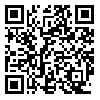
 , Reza Gharakhanlou2
, Reza Gharakhanlou2 
 , Sara Barmaki3
, Sara Barmaki3 
 , Ali Khazani *
, Ali Khazani * 
 4, Mahdi Khorshidi-Hosseini5
4, Mahdi Khorshidi-Hosseini5 

2- Department of Physical Education and Sports Sciences, Faculty of Humanities, Tarbiat Modares University, Tehran, Iran
3- Department of Physical Education and Sport Sciences, Faculty of Humanities, Ardabil Branch, Islamic Azad University, Ardabil, Iran
4- Department of Physical Education and Sport Sciences, Faculty of Humanities, Ardabil Branch, Islamic Azad University, Ardabil, Iran , khazaniali@gmail.com
5- Department of Exercise Physiology, Faculty of Education and Psychology, University of Mohaghegh Ardabili, Ardabil, Iran
This study attempted to draw a comparison between the age average of Iranian medal winners in Olympic and Asian games and their counterparts from selected countries. The statistical population of the study included Olympic medal winners from the past 100 years and the Iranian who had won medals in 3 rounds of Asian games. The findings indicated that the age average of Iranian medal winners of 3 events (wrestling, weight lifting and taekwondo) at the Olympic games was 24.9 years, while the lowest age average in 3 rounds of Asian games was observed in Boxing (21.8), Karate (23.5), Track and Field (23.5), Fencing (24), Basketball (24), Taekwondo (24.4), Volleyball (24.5), Canoeing (24.6), Judo (24.7), Cycling (24.9) and Soccer (25). The age average of Iranian medal winners showed changes in a reversed U- shape in which the best performance was observed in the 21-28 years age range, while the corresponding age average of Olympic medal winners of the past 100 years in team games was 26-29 years. The age range for speed and strength sports was 22-25 years, while the age range in games requiring not only strength and speed but also high levels of concentration and experience was slightly higher. Professionals, coaches and trainers can utilize the findings of this research to help with scouting, practice planning and development of specialized training protocols for athletes to achieve their set goals.
Received: 2015/09/1 | Accepted: 2015/12/23
| Rights and permissions | |
 |
This work is licensed under a Creative Commons Attribution-NonCommercial 4.0 International License. |

